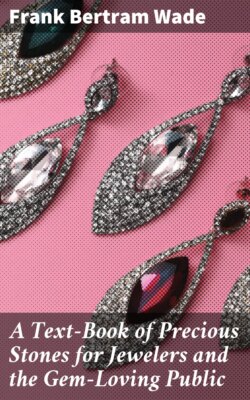Читать книгу A Text-Book of Precious Stones for Jewelers and the Gem-Loving Public - Frank Bertram Wade - Страница 9
На сайте Литреса книга снята с продажи.
REFRACTION
ОглавлениеTable of Contents
Explanation of Refraction. Perhaps the surest single method of distinguishing precious stones is to find out the refractive index of the material. To one not acquainted with the science of physics this calls for some explanation. The term refraction is used to describe the bending which light undergoes when it passes (at any angle but a right angle) from one transparent medium to another. For example, when light passes from air into water, its path is bent at the surface of the water and it takes a new direction within the water. (See Fig. 1.)
Fig. 1.
AB represents the path of light in the air and BC its path in the water.
While every gem stone refracts light which enters it from the air, each stone has its own definite ability to do this, and each differs from every other in the amount of bending which it can bring about under given conditions. The accurate determination of the amount of bending in a given case requires very finely constructed optical instruments and also a knowledge of how to apply a certain amount of mathematics. However, all this part of the work has already been done by competent scientists, and tables have been prepared by them, in which the values for each material are put down.
The Herbert-Smith Refractometer. There is on the market an instrument called the Herbert-Smith refractometer, by means of which anyone with a little practice can read at once on the scale within the instrument the refractive index, as it is called, of any precious stone that is not too highly refractive. (Its upper limit is 1.80. This would exclude very few stones of importance, i.e., zircon, diamond, sphene, and demantoid garnet.)
Those readers who wish to make a more intensive study of the construction and use of the refractometer will find a very full and complete account of the subject in Gem-Stones and their Distinctive Characters, by G. F. Herbert-Smith, New York; James Pott & Co., 1912. Chapter IV., pp. 21–36. The Herbert-Smith refractometer is there described fully, its principle is explained and directions for using it are given. The price of the refractometer is necessarily so high (duty included) that its purchase might not be justified in the case of the smaller retailer. Every large dealer in colored stones, whether importer, wholesaler, or retailer, should have one, as by its use very rapid and very accurate determinations of stones may be made, and its use is not confined to unmounted stones, for any stone whose table facet can be applied to the surface of the lens in the instrument can be determined.
